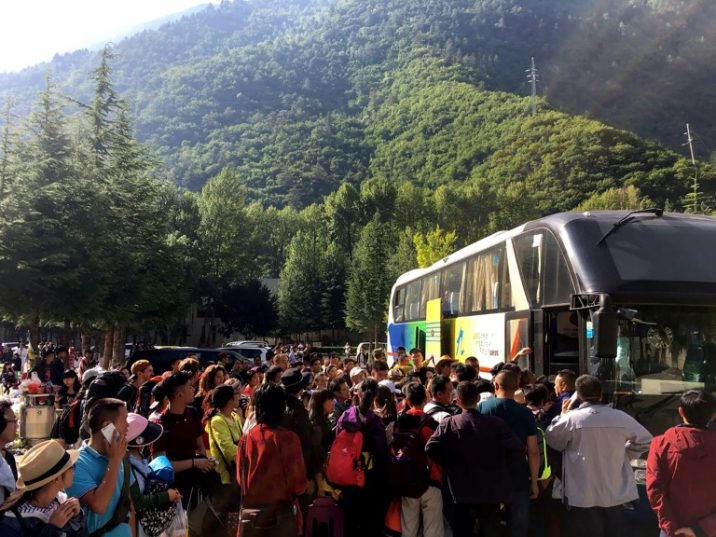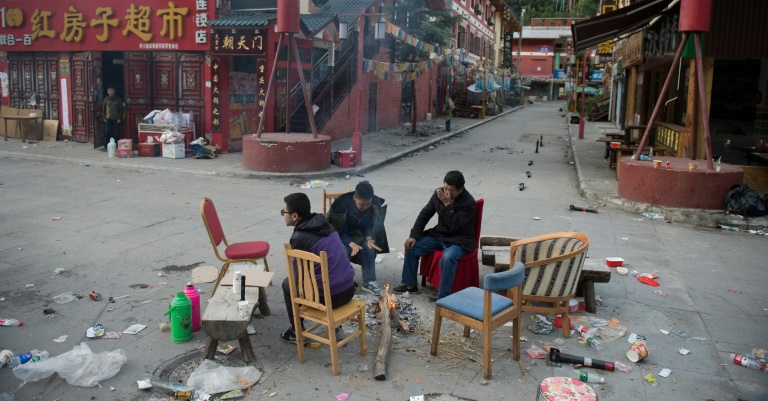Daily Lotto results: Saturday, 22 February 2025
Twenty people were killed by Tuesday’s 6.5-magnitude quake in Sichuan province, a comparatively low toll — thanks to the area’s remoteness — for a country prone to some of the world’s deadliest quakes.
But the disaster deals an economic blow to Jiuzhaigou, a national park and UNESCO World Heritage Site renowned in China and whose mostly ethnic Tibetan and Qiang people depend heavily on income from visitors.
“There probably won’t be any more tourists the rest of the year. It may take two or three years for things to get back to normal,” Yang Siding, a Tibetan in his 30s, told AFP.
“We pretty much depend entirely on tourism to make a living. We have nothing else,” Yang, who runs a guesthouse, said while checking on his apartment following an aftershock.
Jiuzhaigou is prized as one of heavily polluted China’s few remaining areas of pristine beauty. More than 140 lakes, ranging from crystal-clear to turquoise, lie at the feet of forested mountains.
Despite its remoteness, the local government said the park hit its maximum daily capacity of 41,000 visitors just days before the quake, after luring 1.56 million tourists in 2017’s first half.
More than 30,000 tourists were in the park when the quake struck, heavily damaging at least one hotel. At least six visitors and two Jiuzhaigou residents were among the quake dead.

China evacuated more than 30,000 tourists in its mountainous southwest after a strong earthquake rattled the region, killing at least 20 people
Most damage from the quake appeared caused by landslides, and harrowing reports emerged describing people being killed or injured by boulders smashing into buildings and cars.
More than 30,000 tourists were evacuated by late Wednesday.
National tourism authorities have issued their highest safety warning for Jiuzhaigou, telling tourists to stay away and travel agencies to cease organising trips amid recurring aftershocks and landslides.
– Ghost towns –
Normally bustling Jiuzhaigou hamlets like Zhangzha now resemble ghost towns, according to AFP journalists who visited Thursday. Although quake damage appeared minimal, hotels and shops were boarded up or deserted along rubbish-strewn streets.
Tourism had proved a local godsend as China’s growing middle class increasingly catches the travel bug. Residents say many who grew up as poor farmers now have cars and some can even afford second homes in big cities.
“After tourism came here (around 2000) our quality of life improved so much,” said Yang.
“Now I suppose we’ll have to go out elsewhere and find jobs.”

Normally bustling Jiuzhaigou hamlets like Zhangzha now resemble ghost towns, with hotels and shops boarded up or deserted along rubbish-strewn streets
The tremor stirred memories of a devastating 8.0-magnitude earthquake in similarly mountainous areas of the same region in 2008 that left 87,000 people dead or missing.
The 2008 quake cost Sichuan — home to several of China’s famed panda sanctuaries and renowned Tibetan monasteries — “tens of billions of yuan” (several billion dollars) in tourism revenue, according to the official Xinhua news agency.
“Now it’s in the government’s hands. They’ll have to assess whether the buildings are safe before letting tourists back here,” said hotel cook Zhou Quan, a member of China’s dominant Han ethnic group.
Even after that, Jiuzhaigou will be scarred.
Quake-triggered landslides ripped swathes of green forest from mountainsides, leaving huge gashes, in some places tumbling into the glassy waters and turning them brown, aerial footage by Chinese media showed.
One of the park’s best-loved spots — Sparkling Lake — suffered “severe” damage, park authorities said, after one of its banks collapsed, draining a section of the lake nearly dry.
The outlook is worsened by government policies, said Songpa Tsanduze, a Tibetan woman in her 40s who runs a Zhangzha shop.
Wearing golden hoop ear-rings and elaborate hair braids, she said authorities had used traditional Tibetan land for a reforestation project.
“There are trees on our land so we can’t farm it. We have no choice but to go into business. But now, after this earthquake, I don’t know how we’ll be able to feed ourselves,” she said.
Download our app